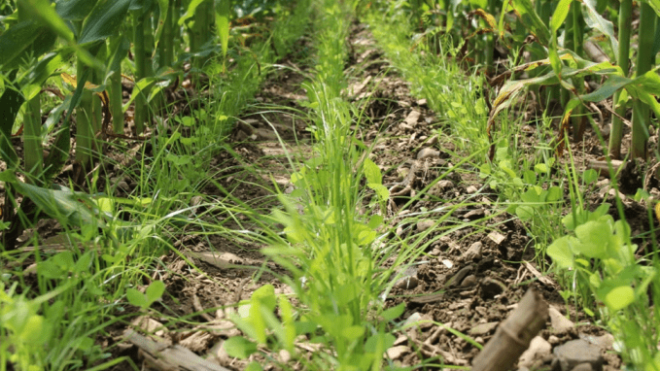Farmers throughout the U.S. have shown renewed interest in implementing practices that improve soil and resource conservation on their farms in recent years. With the many benefits that cover crops provide, farmers are looking for ways to include them in their crop rotation. Successfully managing a cover crop, however, requires careful planning and execution of that plan.
Know Your Goals
Why do you want to add a cover crop to your rotation? Whether you want to build organic matter, prevent soil erosion, scavenge excess nitrogen, provide weed and pest control, or you have other reasons, knowing your goals will determine how you successfully manage a cover crop on your farm.
Choosing a Cover Crop Species
Cover crops mostly fall into three plant types: grasses, legumes, and brassicas. Grasses often produce high amounts of above and below-ground biomass and scavenge excess nitrogen (N). Legumes that form associations with N-fixing bacteria can reduce N fertilizer needs in the successive cash crop. Brassicas can also produce large amounts of biomass and their large taproots are able to disturb compacted soil layers. Make sure to know your goals and choose a species that will help you attain them.
When and How to Seed Your Cover Crop
Equipment may be the largest determining factor in how and when you will seed. Cover crops can be seeded using a drill or planter, or can be broadcasted with or without incorporation. Some equipment allows for seeding within a standing crop, or a plant can be used to overseed over a standing crop.
When you can seed will be dependent on the equipment you have available. In most cases, cover crops are drilled or broadcast following a cash crop harvest. Drilling cover crops will result in the greatest establishment, while broadcasting allows you to cover acres faster. Consider slightly increasing seeding rates for broadcast seedings. The opportunities to seed a cover crop prior to planting a cash crop are limited as you move north since there are not enough growing degree days to establish the cover crop prior to planting the cash crop. Seeding following cash crop harvest provides greater flexibility. Following wheat harvest in the summer, the options to select a specific species are the greatest as most species will have sufficient time to establish and provide their intended benefits. Seeding following corn or soybean harvest limits species selection, especially as you move north. Grasses, such as cereal rye or annual ryegrass, are often planted at this time.
If you have access to specialized equipment, seeding into a cash crop is also an option. Interseeding cover crops early into corn or soybeans, prior to canopy closure, provides greater species selection. There is much research being conducted to determine which species will best survive under the shade and not compete with the cash crop. Overseeding or interseeding into corn late-season as the canopy senesces with a plant or high-boy seeder is also an option.
Terminating the Cover Crop
When seeding a cover crop, make sure you know how to terminate it to mitigate issues with getting next year’s cash crop in the ground. Termination difficulty is one of the greatest barriers to cover crop adoption. Excessively wet spring conditions cause delays for herbicide applications or tillage resulting in increased cover crop growth that is difficult to manage prior to planting. Know whether the species you are seeding will winterkill or if you will need to manage it in the spring with herbicides and/or tillage.
In conclusion, if you’re new to cover crops, start small. Try it on a few acres and find out what species, seeding method, and termination practices work for your operation. While adding a cover crop to your rotation requires additional work and planning, understanding how to manage a cover crop successfully will help set you up for success. There are a variety of resources available (Beck’s personnel, agronomy briefs, videos, university resources, and the Midwest Cover Crop Council) to help you reach your cover cropping goals.
~ Aaron Booker, Ph.D. – Field Agronomist

